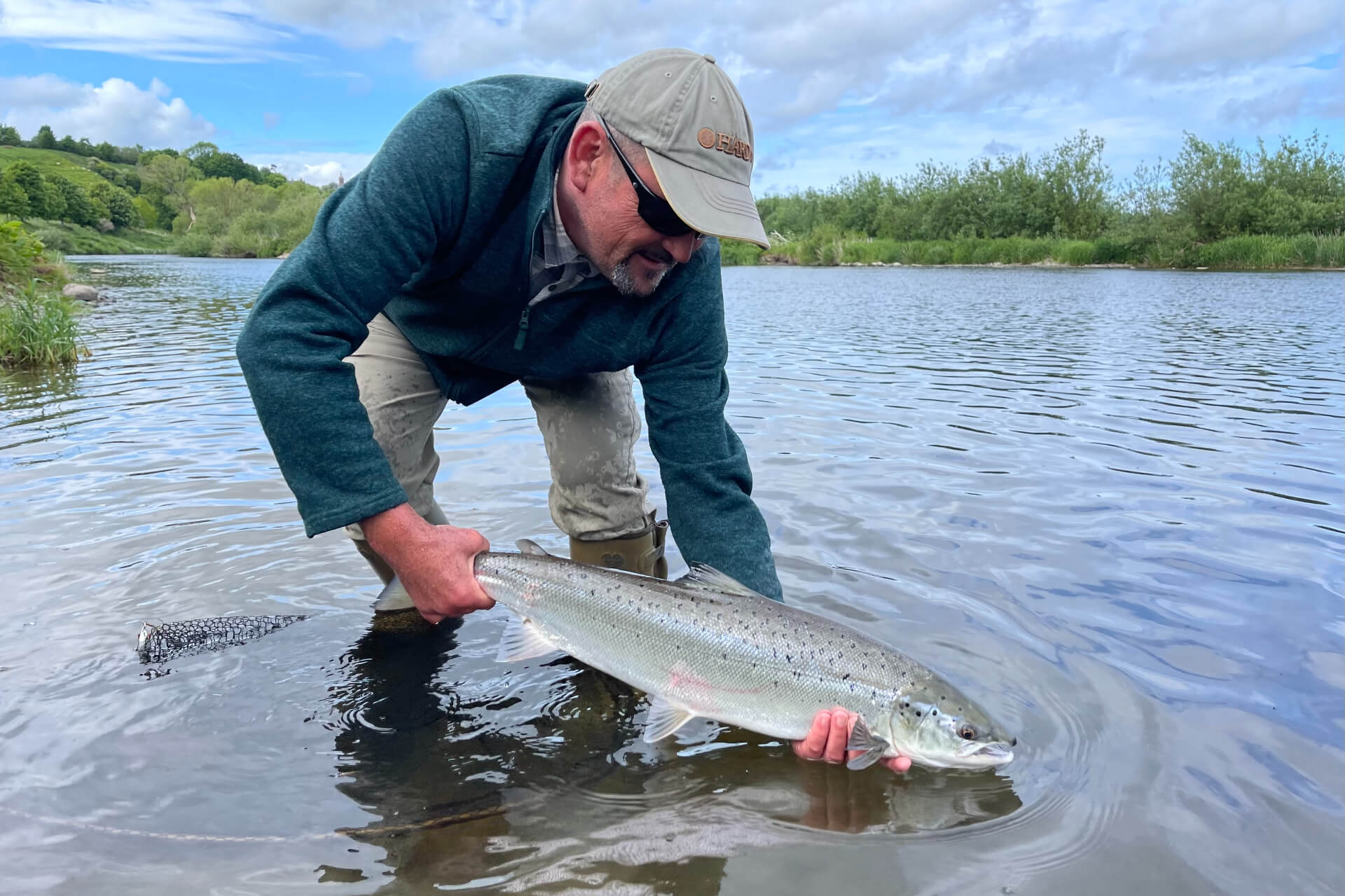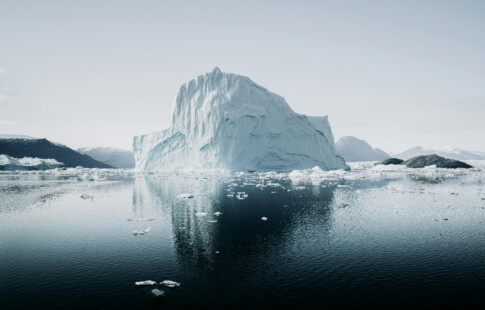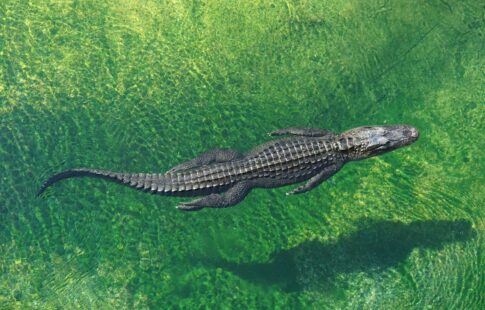
Atlantic Salmon: Lifecycle, Endangerment, and Preservation
We are reader-supported. When you buy through links on our site, we may earn affiliate commission.
You may have heard more about the Atlantic salmon lifecycle recently. How they travel and how ocean pollution impacts populations is worth discussing because it reflects the transformations animals take to adapt. Are they endangered, and what are marine experts doing to study and keep them safe?
About the Atlantic Salmon
Despite their oceanic name, Atlantic salmon start as freshwater fish. Like other salmon, they are known for their intense migratory journey. The Atlantic salmon is dubbed the “King of Fish” because of how epic their transformation is. They live up to seven years, depending on how kind the waters are and how much climate change and external factors hinder them from proper development and feeding.
Atlantic salmon are fish that environmental regulatory bodies want to pay attention to because they indicate the wellness of local ecology. If the Atlantic salmon population shifts or becomes damaged, there is a more significant problem. In some areas, there are hundreds of thousands of salmon, while others have a population in the hundreds.
The Atlantic Salmon Lifecycle
The Atlantic salmon lifecycle follows these distinct stages, where its growth and capabilities outline where and what it is doing in life.
Spawning and Egg Development
Mother salmon find a breeding area with reliably flowing water where they release eggs while the males release milt that fertilizes them. The nest area is called a redd. The eggs grow from fall to spring.
Alevin
Alevins are just spawned salmon but carry the yolk sac to feed on. They spend the first couple months of life learning how to use their fins. The pools the mother salmon chose had fast currents, which was essential for providing the eggs the oxygen they needed to develop. Alevins must learn quickly, or navigating swift waters will forever be challenging.
Fry
The yolk goes away, and the alevin graduates into a fry. They spend around a year at this stage, growing while they eat as much as possible.
Parr
A fry becomes a par when they develop parr marks, which develop over their year as a fry. They need these parr marks because they help with survival. The colors allow salmon to hide better in their environments. A salmon remains a parr for a long time, and it varies depending on how healthy and well-fed the salmon is throughout its life.
Smolt
Smolting is the process where a salmon loses its parr marks. The fish becomes more silvery, but more happens internally because the salmon is about to make the biggest move — transforming from a freshwater fish to a saltwater fish. Its whole life, it learned to swim against currents, but the future of a salmon is more sensible to the water’s tendencies.
Adult
Now, the salmon are feeding in the sea. It does this to grow and eventually return home. Some salmon stay away for one year, while others stay away for three or four. Once it returns to freshwater, it needs to have enough food as reserves to power it through its final stage of life. They always remember where they came from.
Kelt
It’s time to fight for a mate. All of that food the salmon consumed in the sea will pay off when it finally gets to spawn. It uses all of its energy and resources to find the best females. Some get lost in the fray, but a few return to the ocean to feed and go through the process again. This is an unlikely scenario.
How Atlantic Salmon Are Faring
Currently, the Atlantic salmon are tagged “least concern” on the IUCN Red List, but that does not mean there is no cause for concern. Populations have been declining since the 1970s, but their density, spread, and repopulation rate have prevented them from a worse rating. It could happen someday.
They are predominantly located in eastern North America and Europe, where some locations are more impacted than others, such as the Gulf of Maine population. Some regions have an overwhelming absence, while others keep numbers reasonable despite external influences. These are the most prominent concerns:
- Dams
- Overfishing and commercial fishery exploitation
- Pollution
- Disease spread
- Climate change-related factors
These all influence their ability to spawn at their typical rates. Atlantic salmon diets also take a hit. They usually eat plankton and other small sea insects. If the water becomes too much for these species to handle, then Atlantic salmon lose out on the food they desperately need to reproduce.
What the World Is Doing to Preserve Atlantic Salmon
Policymaking is one of the most surefire ways to keep Atlantic salmon safe and healthy. Some regulatory bodies have made it illegal to fish for wild Atlantic salmon. In the United States, Atlantic salmon on the market are grown in commercial cultures. Individual and commercial fishing of Atlantic salmon in their natural habitats is prohibited.
One of the leading authorities in Atlantic salmon preservation is the North Atlantic Salmon Conservation Organization. Their mission is to bring back wild populations to their former glory. Every year, they release a report detailing their successes and goals to keep momentum and hope alive. Their current priorities for implementation include:
- Encouraging ethical management of salmon fisheries to minimize chances of illegal fishing.
- Restoring salmon habitats.
- Enforcing better aquaculture practices, including improved transportation and introducing species back into natural habitats.
Each region with an Atlantic salmon population is responsible for adding documents to the respective reporting cycles. Additionally, the organization is vying for regulation. It would assist in preventing the spread of infectious disease, which is currently harming hatcheries and killing thousands of salmon youth.
What the Atlantic Salmon Lifecycle Represents
The Atlantic salmon lifecycle is unique because of its transition from fresh- to saltwater. There are several other anadromous species, but the Atlantic salmon is one of the most prolific and fascinating. Protecting them from the impacts of climate change is essential because it sets precedents for how humans should treat the planet. Even though you may not be directly in their waters, humanity’s actions seep into them.
Share on
Like what you read? Join other Environment.co readers!
Get the latest updates on our planet by subscribing to the Environment.co newsletter!
About the author
Steve Russell
Steve is the Managing Editor of Environment.co and regularly contributes articles related to wildlife, biodiversity, and recycling. His passions include wildlife photography and bird watching.





